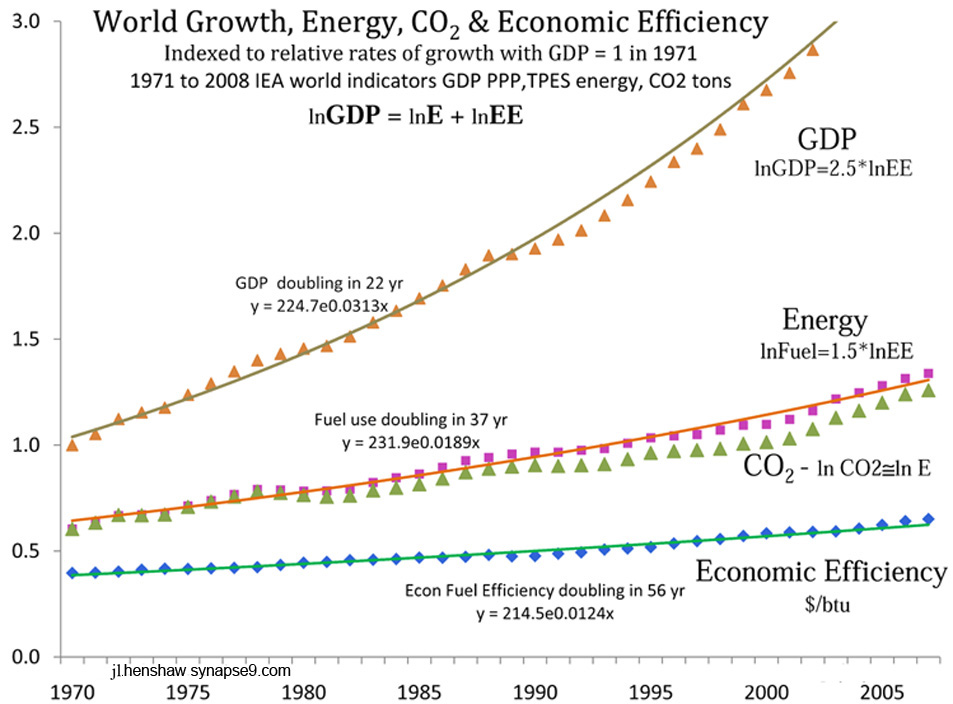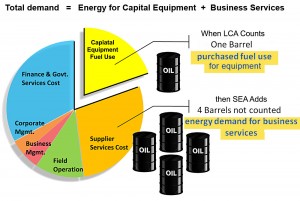This post was for the UN’s OWG 5 meetings on Sustainable Development Goals (SDG’s) from 11/23 to 11/27, submitted as an NGO contribution to Post2015 energy development positions. The issue here is that there’s a big mismatch between local and global measures for current accounting methods used to estimate the energy uses businesses are responsible for. It’s an accounting discrepancy commonly on the order of five or tenfold, i.e. so large and undefined that local measures become not scientifically comparable. It comes from the way the local measures are defined not including a way to account for the energy uses incurred as businesses pay for the services they use to operate. The global accounting includes them by being the total of all economic energy uses combined.
They have “consumption for production” just like technology, but just not yet being counted!
_____________________
The global data is very clear, increasing GDP always requires proportionally related increases in energy use. Our local sustainable business plans for all sorts of projects seem to suggest the reverse, though, increasing revenue (fractions of GDP) with decreasing energy use!
What’s up?? Our math and the world’s seem to disagree!
Could some projects be outsourcing energy services and not knowing it??

There are two possibilities. Either there are hidden energy uses that our SD proposals are a)not responsible for, or that they b) are responsible for. It’s hard to chase down puzzling discrepancies like this, but this one had an answer, published in Sustainability (MDPI) in 2011, as Systems Energy Assessment (SEA).
What seems to be happening, all over the world, is the amount of **untraceable energy use** is growing… and so making SD figures unreliable and overly optimistic.
The real problem I found with our metrics is they rely on just counting **traceable energy use**! It happens naturally if our sustainability metrics were designed with no way to estimate the quantity of untraceable energy uses left uncounted. That’s what’s needed to close the global accounting, and that’s what the method in SEA does, solving the problem.
Who am I?? I guess you’d say I’m “Sherlock Holmes” for the serious sleuthing it took to find and propose how to fix the problem. Being a great sleuth doesn’t make me a great enough saleswoman, though, to persuade people to study why their numbers are much too optimistic. The clear evidence is that our overly optimistic numbers are **showing us the wrong path to sustainability** though.
So… SD may have long lists of wonderful things about it, but it doesn’t use less energy, really. Just like growing GDP, growing SD => growing energy demand, and in a constrained market… raising the price higher and higher. So, without limiting energy demand (and development) for someone…, the price of energy just goes up and up and cuts out the poor.
One way or another it’s not “energy for all”.
The research is found at:
Global Energy Budget – http://synapse9.com/pub/EffMultiplies.htm
Corrected Accounting of Embodied Energy – http://synapse9.com/SEA
World resource prices rising – http://www.synapse9.com/pub/ASustInvestMoment-PH.pdf

